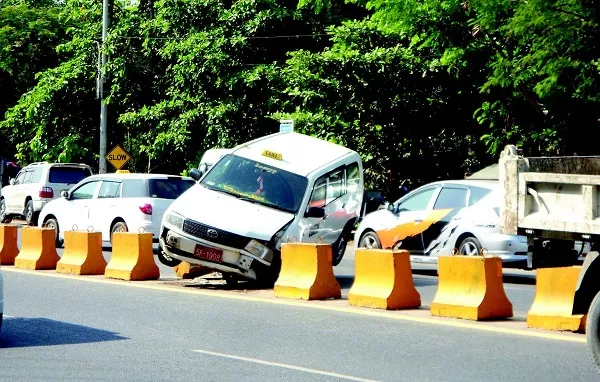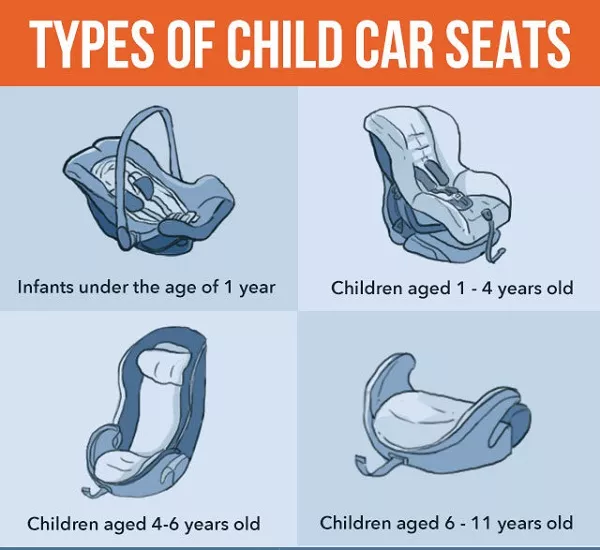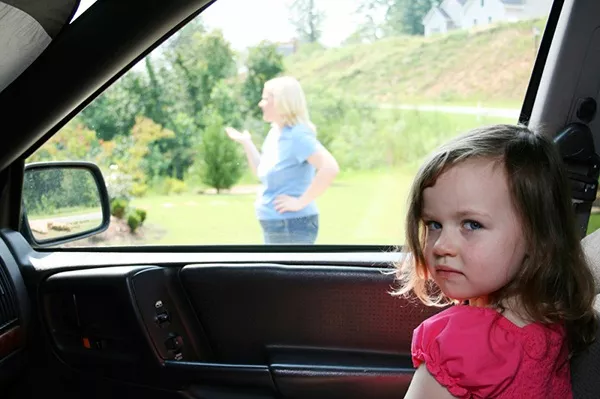Accidents related to traffic can happen every day in any part of the world. These motor-vehicle-related accidents may include a car bumping into another car, a car bumping a person, and a car bumping into structures, and these are unavoidable even if you are the most careful and keen driver.
That is because the “road is unpredictable”—drunk drivers, unexpected blockage, jaywalkers, and more.

Road accidents can happen anytime, anywhere
1. Why the car seat law Philippines was proposed?
The Philippines already has the so-called seat belt law or RA 8750. It requires drivers and passengers to wear seatbelts all the time, as well as to make sure that the car has the necessary seatbelts installed. It also includes the fact that children under six years old are not allowed to sit in the front passenger seat
As we have mentioned earlier on this Philkotse post, traffic-related accidents come as a surprise and unpreventable. Since the said law does not require any form of child restraint systems or devices, the pioneers decided to pass the car seat bill. They justified that the use of a car seat can help prevent car accident injuries and deaths.
With that said, the bill leading to the car seat law Philippines has been signed by President Rodrigo Duterte on February 22, 2019. Apparently, the main purpose of this law is to ensure the safety of children.
Child Seat Law | Failon Ngayon
2. Salient points of the car seat law Philippines
The law, officially known as Republic Act No. 11229 or the Child Safety in Motor Vehicles Act, which consolidates the Senate Bill No. 1971 and House Bill No. 6938, states the following:
Child security while traveling or the engine is on
According to this new Philippine law, kids 12 years old and below are required to be in a child restraint device or a baby seat.
Front seat use
Kids are no longer allowed to sit in the front seat. The front seat can only be occupied by children of the same age as above (12 years old or more) if they are 150 centimeters, as well as if they can be secured properly by the car’s seatbelt.

Children under 12 years old are no longer allowed to sit in the front seat
Child restraint product requirements
The product should match the kid’s height, weight, and age. It should also have the PC or ICC sticker or seal. In case the said sticker has tampered, forged, imitated, or altered, a fine of 50,000 to 100,000 for each child restraint system shall be collected from the violator.
>>> For your further reference: Choosing the best car seat for your children - 3 advice for Pinoy drivers

The different types of children car seats
Adult supervision
Whether the vehicle is moving or not, no child should be left alone.
Penalties
People who are found violating the law shall suffer the following consequences
|
Offense
|
Penalty
|
|
First offense
|
1,000 Php
|
|
Second offense
|
2,000 Php
|
|
Third plus succeeding offenses
|
5,000 Php
12-month driver’s license suspension
|
>>> See more: Complete list of LTO fines and penalties in the Philippines

No child should be left alone!
Exemptions
Public utility and emergency (i.e. ambulance) vehicles.
3. Your child’s safety on the road matters!
The car seat law Philippines is as straightforward as it is. It is meant to make sure children 12 years old and below are protected well in case road mishaps happen.
Nonetheless, it clearly states that tested and quality-checked child restraint products should be bought by parents or people who travel with kids using their private cars.
Recent posts
- 5 things you need to know about baby car seats Aug 16, 2022
- How to safely install baby car seat: 4 easy steps for Pinoy parent Nov 08, 2022
- Wearing seatbelt, to avoid fine or save life? Aug 09, 2019
- Seat belts safety: 5 things you need to know Aug 09, 2019












